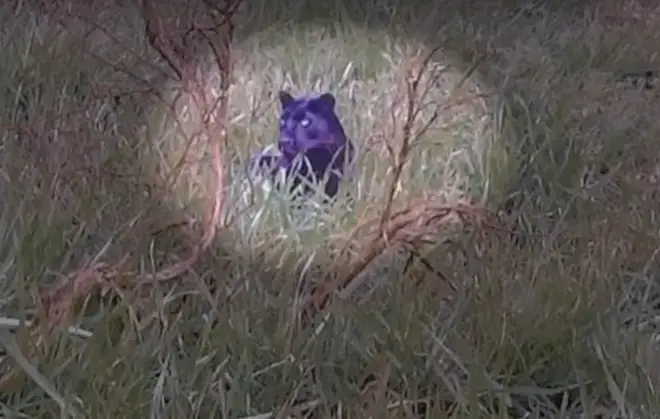At least 13 sightings of so-called "big cats" have been reported across Devon and Cornwall in the past five years, according to official police logs released under a Freedom of Information request.
Reports recorded between January 2021 and March 2025 describe panther-like animals, pumas, lynx, and even what one witness believed was a lion. The incidents, logged on Devon and Cornwall Police’s incident recording system, span rural locations and urban areas alike — from the Camel Trail in Bodmin to the back gardens of Penzance.
Descriptions vary, but commonly reference large, black cats with long tails, animals "the size of a puma", and in one case, a feline that reportedly jumped a 6-7ft hedge.
In six of the 13 incidents, police followed up with an officer in person, including a call in South Molton in November 2021 where the caller claimed to have seen a lion. Checks with nearby zoos confirmed all big cats were accounted for.
In another case, a Plymouth resident said a large black cat climbed down from a tree at the back of her property, comparing it to animals “seen in the zoo.” Officers attended and found no escaped animals reported in the area.
Other dramatic sightings include a grey or white feline seen in Helston gardens in June 2024, a “tiger-sized” black cat in Exminster in August 2022, and a spotted cat crossing the road near Penzance in March 2025 – likened by the witness to a lynx.
The data was gathered using keyword searches of police logs for “big cat”, “panther”, “puma” and “lynx”. Incidents referencing clothing brands, car models or tattoos were excluded after manual checks.
One 2024 sighting on the Camel Trail described a black cat two feet tall and three feet long with a “long tail”. Officers attended and found the caller “genuine in his manner”.
Somer experts remain sceptical about the existence of a breeding population of big cats in the wild. However, isolated escapes or releases of exotic pets have occurred historically – including a 1980s case when changes to the Dangerous Wild Animals Act led to animals being let loose.
The sightings follow growing national interest in the so-called British Big Cat phenomenon – and, for the first time, compelling scientific evidence. In 2023, the documentary Panthera Britannia Declassified revealed that forensic scientists had confirmed the presence of big cat DNA in the UK countryside.
The breakthrough came when investigators recovered black hairs from a barbed wire fence on a Gloucestershire farm where sheep had been attacked. Lab testing showed a 99% DNA match to a big cat species, widely believed to be a black leopard. The finding was described as “definitive proof” by the filmmakers.
Matthew Everett from Dragonfly Films, the team behind the documentary, said at the time: “It’s taken five years for the production team to find such evidence and film its journey from collection to analysis… a leopard DNA result from a black hair sample is unsurprising. This is not the first such DNA result and is unlikely to be the last.”
The hair sample was collected near where a large black animal had been filmed, and followed years of consistent sightings in the area.
While the documentary noted that the predators prefer natural prey like deer, there was also evidence of attacks on sheep and other livestock.
Experts have long suspected that the 1976 Dangerous Wild Animals Act – which forced exotic pet owners to obtain licences – led to a wave of big cats being secretly released into the wild.
Sightings surged in the years that followed, with some areas like Bodmin Moor becoming famous for supposed panther activity.
Back in Devon and Cornwall, the police logs tell a consistent story: large, muscular cats with long tails, described as “panther-like” or “lion-sized”, often seen briefly before vanishing into the landscape. One 2024 sighting near Bodmin reported a 3ft-long black cat with a 2ft shoulder height.
Another in Penzance described a “spotted feline” with markings resembling a lynx. While physical proof remains elusive in the South West, the DNA findings from Gloucestershire have added scientific weight to what many rural communities have believed for decades: that Britain’s countryside may be home to more than just foxes and badgers.

